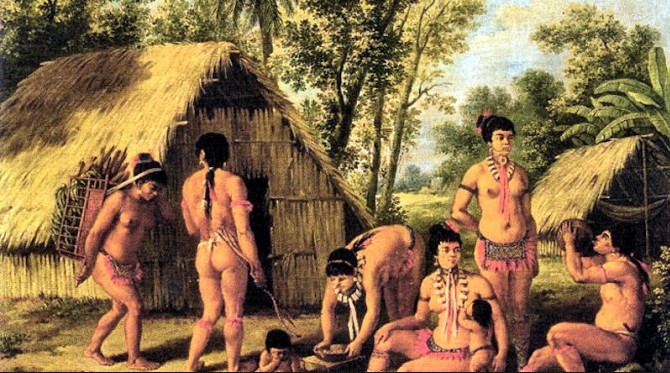
The indigenous peoples along the North Atlantic were familiar with Europeans even before Columbus and John Cabot. These days we all know of the visits of the Norse and Leif Erikson, even their settlement at L’Anse aux Meadows in Newfoundland around the year 1000, and more probable camps down to Massachusetts. But after a decade, the Norse retreated.
The Basques were more regular but less known, frequently hunting whales and fishing for cod in North American waters. Again the Catholic church had a hand in it, forbidding eating meat every Friday and dozens of other holy days. Thus there was a hot market for fish of all sorts, especially for the upper crust. Whale meat and oil were also in high demand. A lot of this in earlier years was caught in European waters, but they were being over-plundered.
The Basques, being excellent fishermen, sailors, and whale hunters, also kept their mouths shut, as best as they could. They didn’t want to share news about the location of the new unplundered fishing waters west of Iceland, from Labrador and Newfoundland, all the way down to Massachusetts.
They had a settlement called ‘Red Bay’ in Canada near Newfoundland, mainly used to render whale blubber into oil and salt down the Cod for the return voyage. Some Native peoples recalled contact and trade with these fishermen, but none was extensive or permanent. They were most impressed with metal tools and colorful cloth, along with the size of the Basque ‘canoes’ and the beards on men. And as noted earlier, the English Crown largely ignored the matter until the late 1500s, save for the few English who fished with the Basques.
So that leaves Spain as the principal early and deadly intruder into ‘Turtle Island.’
As we know, Columbus landed in 1492 and named the place ‘San Salvador’ in the Bahamas. What is less known is precisely which island it was. It’s still debated. The people who lived there, the Taíno (see graphic), called their home ‘Guanahaní.’
In December 1492, Columbus also landed in Hispaniola, home to the Taíno. He left about 30 men with the wreckage of the Santa Maria to form a colony. He also seized a dozen or so Taíno to take back to the King and Queen of Spain as slaves. Columbus had no scruples about brutality toward ‘heathens.’ When he returned to the ‘colony’ on his second voyage, Columbus found it empty, save for a few dead bodies of his men. The story goes that while seizing women and gold jewelry, the men fell out among themselves. A Taíno chieftain named Caonabo gathered an insurgent force against the harsh treatment and wiped the Spaniards out. Later, the Taínos would face genocide, but from the first years, we can see ‘wherever there is oppression, there is resistance.’ But let’s not get too far ahead. Next up is Spain entering ‘Turtle Island’ proper, the North American continent.